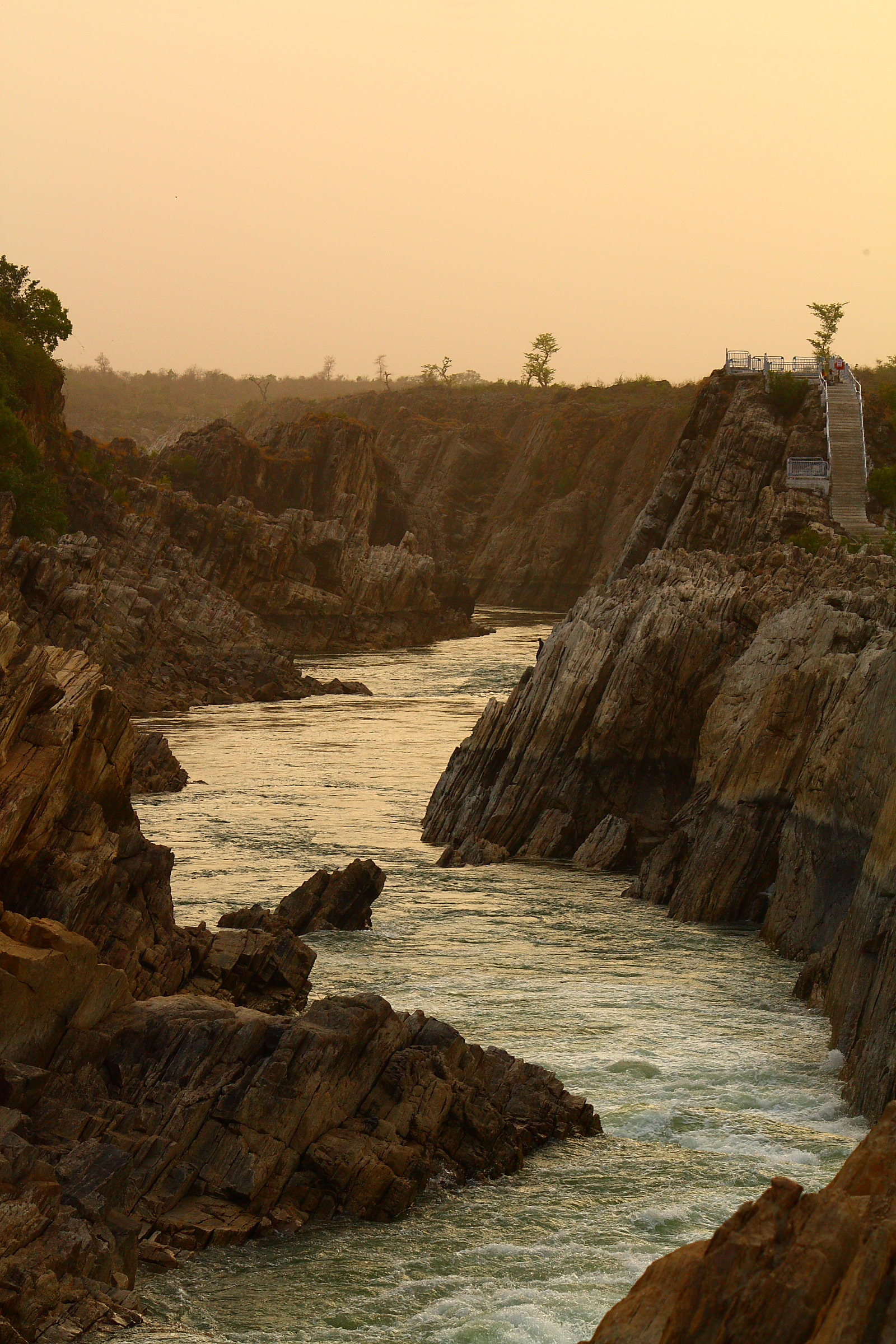Narmada River
 The Narmada River, previously also known as ''Narbada'' or anglicised as ''Nerbudda'', is the 5th longest river in India and overall the longest west-flowing river in the country. It is also the largest flowing river in the state of Madhya Pradesh. This river flows through the states of Madhya Pradesh and Gujarat in India. It is also known as the "Lifeline of Madhya Pradesh and Gujarat" due to its huge contribution to the two states in many ways. The Narmada River rises from the Amarkantak Plateau in Anuppur district in Madhya Pradesh. It forms the traditional boundary between North and South India and flows westwards for before draining through the Gulf of Khambhat into the Arabian Sea, west of Bharuch city of Gujarat.
The Narmada River, previously also known as ''Narbada'' or anglicised as ''Nerbudda'', is the 5th longest river in India and overall the longest west-flowing river in the country. It is also the largest flowing river in the state of Madhya Pradesh. This river flows through the states of Madhya Pradesh and Gujarat in India. It is also known as the "Lifeline of Madhya Pradesh and Gujarat" due to its huge contribution to the two states in many ways. The Narmada River rises from the Amarkantak Plateau in Anuppur district in Madhya Pradesh. It forms the traditional boundary between North and South India and flows westwards for before draining through the Gulf of Khambhat into the Arabian Sea, west of Bharuch city of Gujarat.It is one of only two major rivers in peninsular India that runs from east to west (longest west flowing river), along with the Tapti River. It is one of the rivers in India that flows in a rift valley, bordered by the Satpura and Vindhya ranges. As a rift valley river, the Narmada does not form a delta; Rift valley rivers form estuaries. Other rivers which flow through the rift valley include the Damodar River in Chota Nagpur Plateau and Tapti. The Tapti River and Mahi River also flow through rift valleys, but between different ranges. It flows through the states of Madhya Pradesh (), and Maharashtra, (), () (actually along the border between Madhya Pradesh and Maharashtra () and then the border between Maharashtra and Gujarat () and in Gujarat ().
The Periplus Maris Erythraei (c. 80 AD) called the river the Namnadius (Ναμνάδιος), Ptolemy called it Namadus (Νάμαδος) and Namades (Ναμάδης) and the British Raj called it the Nerbudda or Narbada. Narmada is a Sanskrit word meaning "The Giver of Pleasure"''.'' Provided by Wikipedia
-
1
